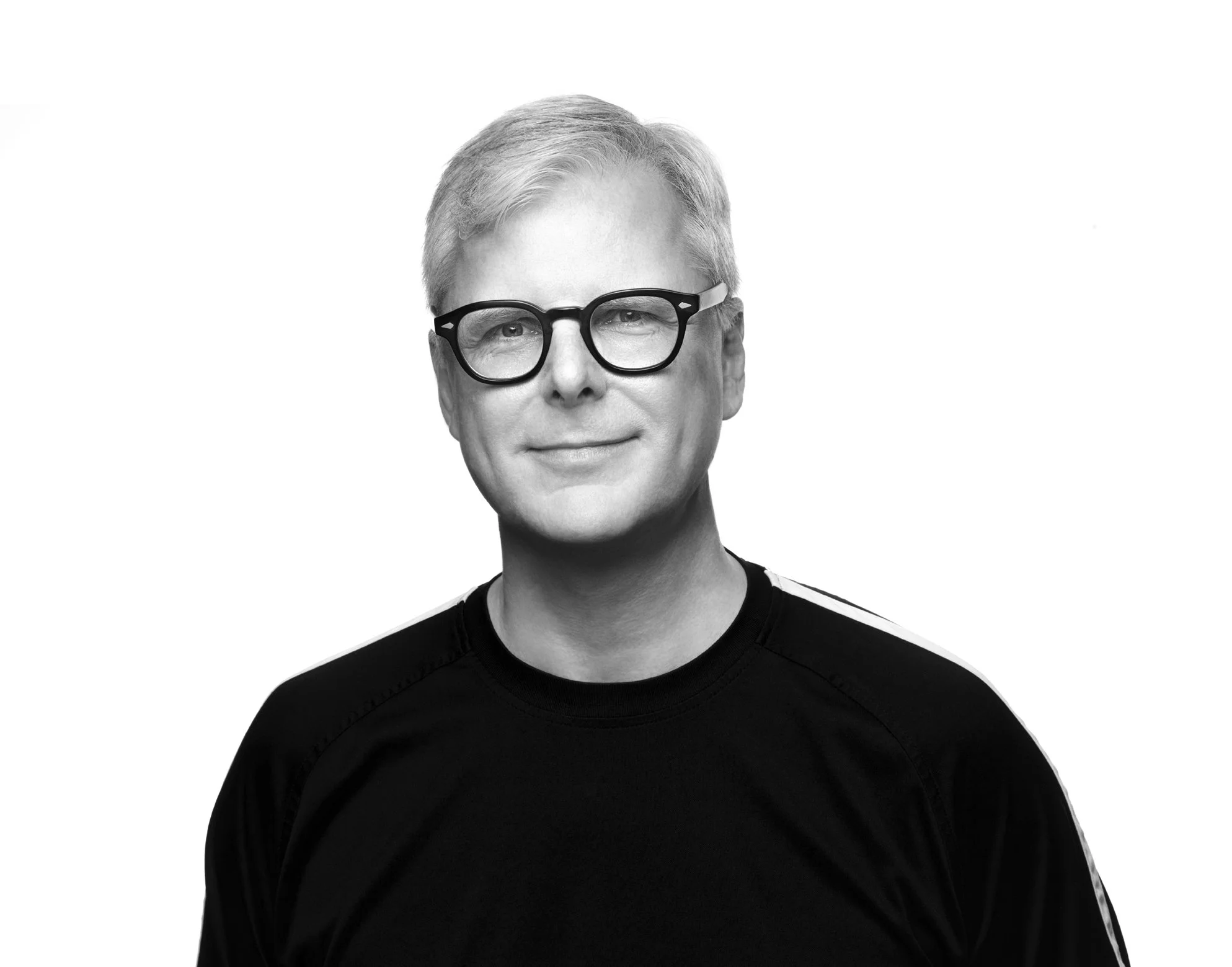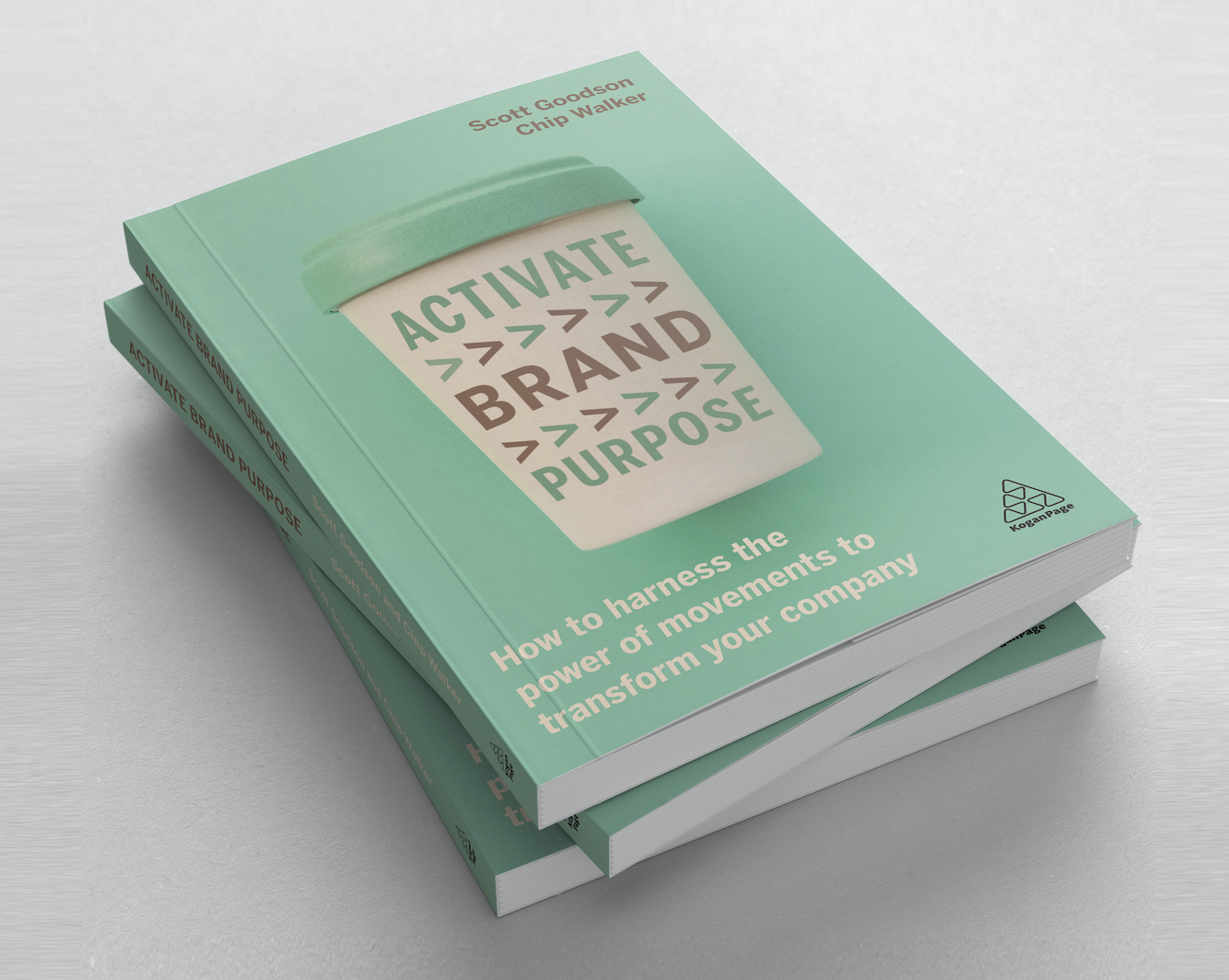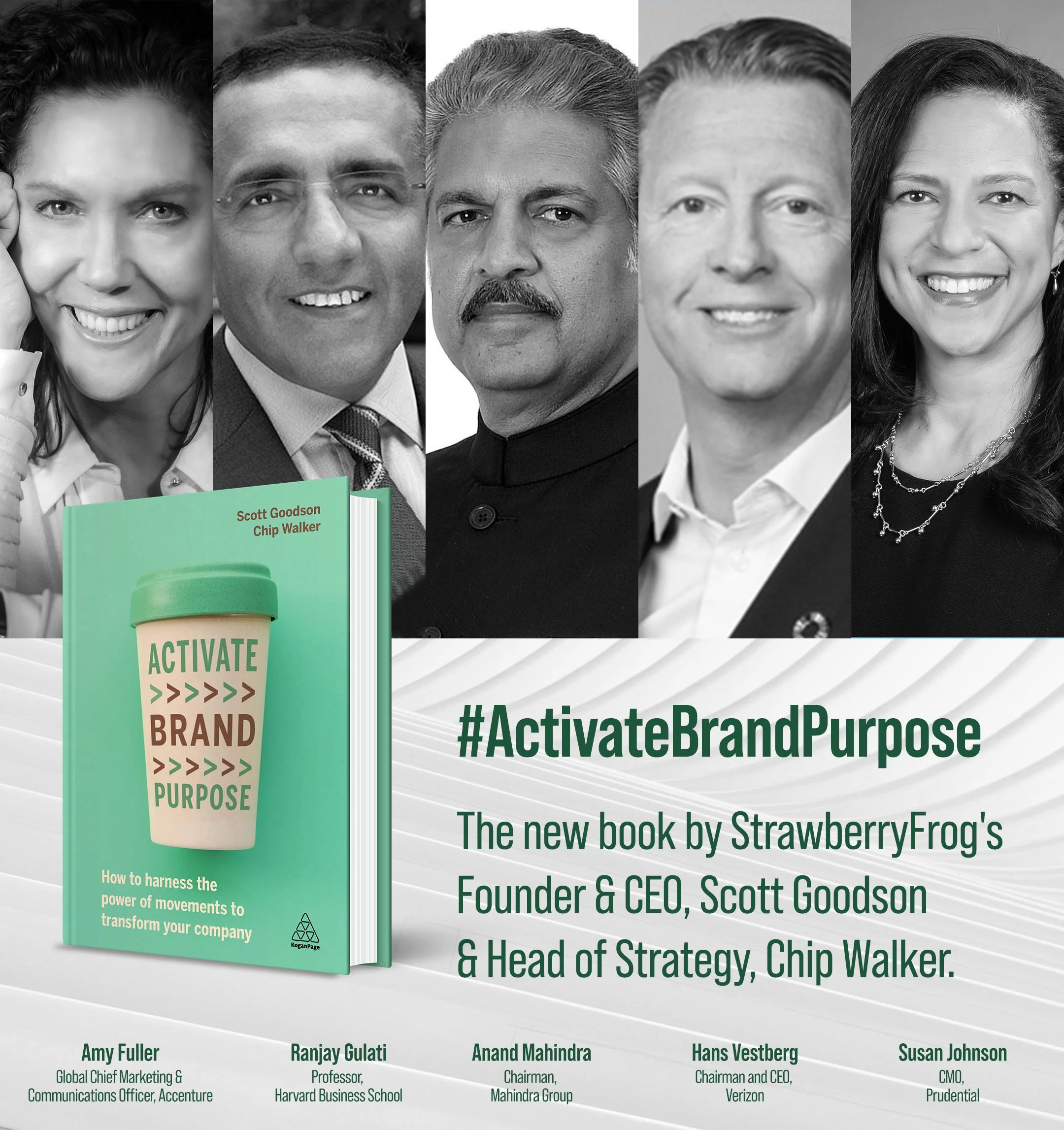Chip Walker On Creating Effective Brands Through Contemporary Movement Thinking
Chip Walker, based in New York, is the head of strategy and a partner at StrawberryFrog and the co-author along with Scott Goodson of Activate Brand Purpose: How to Harness the Power of Movements to Transform Your Company.
He’s recognised for his expertise in brand creation and re-invention, and has led the charge in transforming brands such as Goldman Sachs, Lexus, Bank of America, Jim Beam, and Heineken. Chip is a frequent speaker at some of the branding world’s major events, including the Cannes Lions Festival, the Advertising Research Foundation, Sustainable Brands and the Conference Board. His writing and opinions have appeared widely in places like Adweek, the New York Times, Chicago Tribune and CNBC.
Chip discusses Why businesses must engage with the social impact movement making waves globally, and How entrepreneurs can activate their purpose as individuals and on behalf of their organisations.
Highlights from the interview (listen to the podcast for full details)
[Indio Myles] - To start off Chip, could you please share a bit about your background and what led to your work in branding?
[Chip Walker] - I started out with a traditional background in that I worked in New York City on Madison Avenue for almost 15 years with major advertising agencies like Young and Rubicam and BBDO. I was working with blue chip companies on blue chip brands, doing fairly traditional marketing throughout the nineties. It was I'd say around 2007 or so when I met my current business partner, Scott Goodson, who had founded a firm called Strawberry Frog. It was at that point that the worlds of social good and marketing collided for me, and I started bringing those two elements together. Scott and I have now worked together for many years, and I've really pioneered this approach of helping companies activate higher purpose through movement thinking. That's how I got to where I am now, and I haven't looked back since.
As Head of Strategy at Strawberry Frog, can you tell us more about the firm and its social purpose beyond that?
Scott [Goodson] founded Strawberry Frog in Amsterdam in 1999. In that whole Northern European area (even in those days) there was a lot of interest in ‘greater good’ and higher purpose. There was certainly much more of that than there was in America in those days. The agency was founded with this philosophy of bringing forth societal movements, the thinking behind societal movements to the world of companies, organisations and brands. Scott ended up moving to New York three years later, and he and I joined forces in 2007. Since then, we articulated the purpose of Strawberry Frog as something we call creativity for good. It means just what it sounds like; we're a creatively driven organisation that tries to use its power to do good in the world and help our client organisations do good in the world.
What truly sets us apart is how we do it, and we activate our purpose for clients out in the world through this thing we call movement thinking.
We use some of the theories and principles behind successful societal movements like Black Lives Matter or the Women's Movement. Think of the major movements of the past few decades. We used similar principles and applied them to activating purpose for organisations, and most of our clients are large corporations.
How might enterprises, governments and organisations best engage with and create social movements?
We use the term movement thinking very deliberately, because most companies themselves aren't movements. Companies can help contribute to larger societal movements by being supporters. But movement thinking, as I said, uses some of the principles of successful societal movements as a way of framing issues for companies to get people galvanised behind them. Movement thinking is a way of framing; you may be familiar with the concept of brand positioning. Brand positioning is a way of framing, and it usually involves saying who the product, service, corporation or organisation is for, what it does for people, what they get out of it, and why you should believe it's true.
Usually, there's a brand positioning statement. Movement thinking takes a very different way of framing your company or brand. There are four principles to it:
Movement thinking starts with dissatisfaction; is there an issue or a topic that is bugging you?
There is a desired change; what would you like to see made different out in the world?
Who or what is the enemy; what's standing in the way of change?
Lastly, what's the stand; what action will you take to overcome the enemy and bring about change?
An example would be we did some of the early work for the Smart Car. It's a tiny little car originally sold by a combo of Mercedes and Swatch who developed it. It is a tiny little urban car; they came to us to try to figure out what was the right way to talk to people about their product and sell it. The most obvious way if you were doing traditional brand positioning is you would probably think, "it's smaller, costs less, saves you money, and is more convenient," all of which is true. I think Smart really had higher social ambitions. We used movement thinking to frame a movement for Smart which we called Against Dumb. The dissatisfaction was that there is too much waste out in the world, especially in urban areas. There are big unnecessary cars; gigantic SUVs that are wasteful and causing havoc amongst the urban landscape. The desired change we wanted to see was to restore the urban landscape back to a more pristine state. The enemy we wanted to overcome with this movement was people stupidly over consuming, especially in terms of the automotive industry which we referred to as ‘dumb’. The stand we decided to take was for smarter, more conscious consuming, which we shorthanded as Smart. The movement was called Against Dumb, and it reframed this vehicle as a weapon to help restore the urban landscape and help the environment, versus selling the vehicle as cheaper or more convenient.
How can entrepreneurs harness the power of movements to not only transform their own companies, but create a lasting positive impact in the world around them?
Entrepreneurs who are starting new ventures have some advantages over legacy corporations in thinking about purpose. Movements are a fairly new phenomenon throughout a lot of the world. Most companies who are doing this thinking are having to reverse engineer and re-concept themselves.
The good news is when you're starting from scratch as an entrepreneur, you can create a purpose born brand, and have purpose built into your brand from scratch. We would suggest using movement thinking to help activate that purpose.
We always say you've got to have purpose, but people can't join a purpose. They can join a movement inspired by your purpose, so that's the reason we think whether you're an entrepreneur or not, movements are key to making your movement and purpose actionable.
Looking at existing obstacles, what is holding entrepreneurs back from incorporating social impact and sustainability when conducting business?
There are a lot of obvious things that are hard to fix. There's this need to make money, and sometimes that can conflict with social good agendas. Not always, but sometimes you have a hard time reconciling those. That unfortunately is something hard to deal with. But the thing I often see happen is that a new enterprise will adopt a purpose that's hard to connect back to their underlying business, and so it ends up feeling like philanthropy. For example, you might have a FinTech start-up that helps you move money around decide that their higher purpose is to transform and to help the environment. It's great to help the environment, but when it is hard to connect that back to being in FinTech, things start to go awry. As I said, it starts to feel like this purpose thing is over to the side, and often as a result, it ends up getting left behind.
Whenever we do purpose work for companies, we always feel like it's got to be actually happening. Purpose has to happen at the intersection of good you want to do in the world and your underlying business.
I can give you one example here in the U.S. I think you can purchase it globally, but we've worked a little bit with a company called Boll & Branch. They make fine luxury linens, but the two co-founders discovered once when they were going out to buy linens that the supply chain behind linens is terrible for the environment. They went out to produce quality linens without a lot of the baggage of negative supply chain issues built in. To me that's a good example of a company whose higher purpose is completely related to its underlying business, and they also happen to be great linens if you need.
What inspiring projects or initiatives have you come across recently that are creating a positive social change?
I'll give you one company that is really high minded, and then one that is a lot more practical. At Strawberry Frog we represent a large health system here in the New York City area. In fact, it's the largest employer in New York State, called Northwell Health. We've come up with this movement idea called Better Health for All. The slogan and tagline of the campaign is called Raise Health. The CEO of the company feels very strongly that everyone should have access to healthcare and do what they can to try to provide that. They have hospitals and locations in all kinds of neighbourhoods, whether they be good or bad around New York State. They also believe strongly that hospitals should take on important issues impacting the health of people in greater New York City. A few years ago, we worked with an idea called Food Is Health, and it was really an awareness campaign to help people understand that food is a form of medicine. Your diet has a huge impact on your health, and helping people understand better ways to use food. But more recently, the thing I wanted to talk about is they've decided to take a stand on gun violence. It is a major cause of injury and death in the greater New York City area, the numbers are shocking. I'm guessing you guys don't have that problem in Australia, but we certainly have it here in the US and in New York City. We've done a series of pieces of communication publicly, and the CEO has been making speeches about this project to take on the issue of gun violence in the greater New York City area.
It's just an example to me of a company using movement thinking to just sell hospital services, but to try to make the community a better place.
That's one initiative that is a little higher minded. In past years, we've done a lot of work for Walmart. Walmart is a very large retailer, and definitely the largest employer in the United States. It's one of if not the largest employers in the world. In the U.S. alone, they have something like 2 million employees, but we led an internal movement for them called Live Better that was concerned with getting 2 million people to be aware of, understand, and use their health benefits. Walmart actually has rather good health benefits, but they were going unused because people didn't know about, understand, or know what to do with them. Walmart didn't have to do it; getting people to use their benefits costs them a lot of money, but it was really because they wanted their employees to be healthier, feel better and come to work in a better frame of mind. That's just an example of a movement that's a little bit more practical, but that nevertheless helped make part of the world a little better.
To finish off, what books or resources would you recommend to our listeners?
Selfishly, I feel like I would recommend our book, and if people hear a little more about it they might find it interesting! The book Scott Goodson and I wrote is called Activate Brand Purpose: How to Harness the Power of Movements to Transform Your Company. It talks about how we reached this idea of movement thinking, why we think it's the best way to activate your higher purpose, and how it gives you a pretty clear idea of how you can do movement thinking with tons of examples. The good news is that the examples we have aren't just your typical examples, every branding book uses Nike or Apple. We have a few of those examples in there, but we also have some very different examples I think might stretch your thinking. Another book, if you're interested in this whole idea about movements, is by a friend of mine who we actually interviewed Greg Satell. He has a book called Cascades: How to Create a Movement that Drives Transformational Change. It's a different take on movements, but one I still think is very complimentary to ours. He talks about the nuts and bolts of how to cascade an idea through an organisation, culture or society.
Initiatives, resources and people mentioned on the podcast
Recommended books
Activate Brand Purpose: How to Harness the Power of Movements to Transform Your Company by Scott Goodson & Chip Walker
Cascades: How to Create a Movement That Drives Transformational Change by Greg Satell








